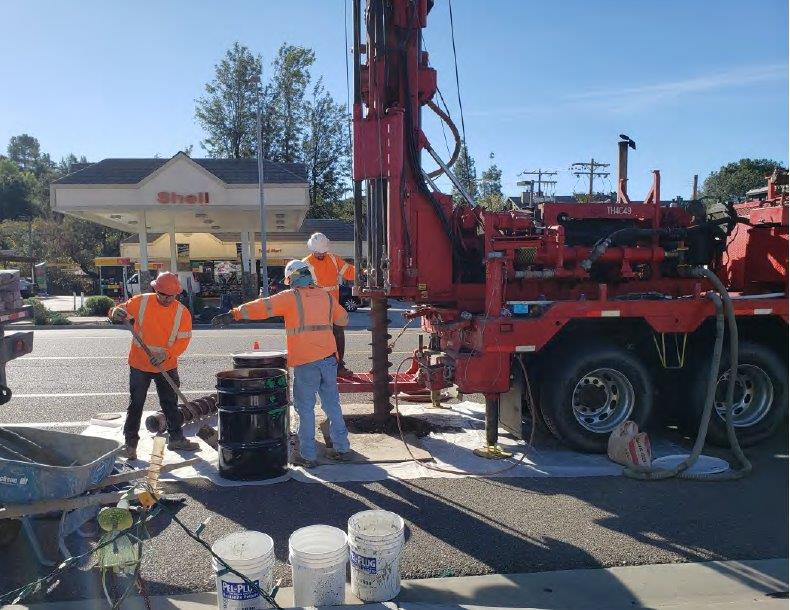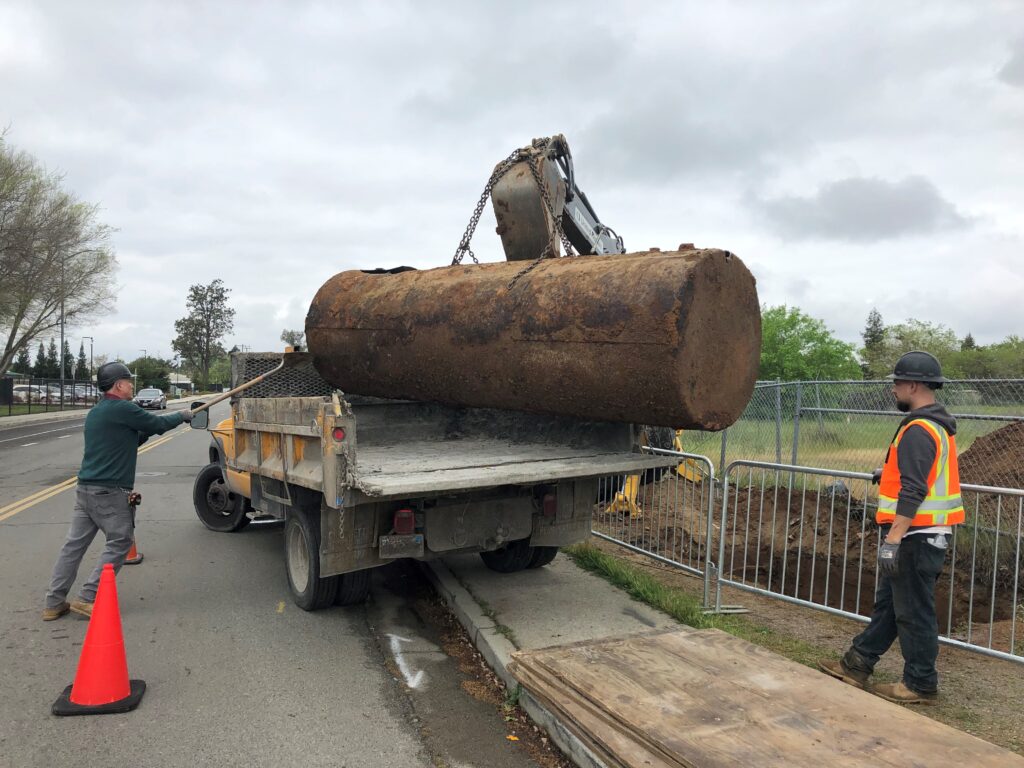California Stalled LUST Case Initiative Turns 5
Since 2018, EPA Region 9 and California State Water Board have closely collaborated to spur progress at some of the most challenging LUST cleanup sites in California. A true federal-state partnership, the Stalled LUST Case Initiative makes creative use of EPA grant funding to reduce the LUST backlog, with significant results.
The California LUST program completed more than 10,000 cleanups in the 10 years from 2006 – 2015. This success, however, left the most challenging cases behind. When the number of yearly completed LUST cleanups dropped to half of its peak levels by 2017, the EPA and the State Water Board began searching for a new framework to actively manage stalled LUST cases. Plans took shape to launch the Stalled LUST Case Initiative in 2018, and the California UST Cleanup Fund’s scheduled sunset in 2025 lent urgency to the effort. Our agencies needed to engage responsible parties that lacked the means or motivation to navigate the LUST cleanup process, and we needed to spur progress before state funding programs expired.
The EPA and the State Water Board mined the GeoTracker database and identified 180 stalled LUST cases — approximately 20 managed by nine of the different Regional Water Board offices throughout the state. Contractors funded by the EPA’s annual LUST grant to the State Water Board reviewed files and prepared case summaries to facilitate in-person meetings. The team, consisting of the EPA, State Water Board, Regional Water Board, and supporting contractor personnel, developed an action plan for every stalled case during the initial 2018 meetings. Follow-up meetings have been held with each local agency three or four times per year ever since to review progress and adjust plans. Every case receives a next step, and meetings adjourn with a clear understanding of who will take that next step.

The team initially made a strategic decision to focus on cases stalled early in the cleanup process. Over the past five years, however, the initiative has expanded dramatically. Regional Water Board offices have consistently provided positive feedback and requested that the EPA and the State Water Board support additional cases. The team now collaborates with 10 Regional Water Board offices and two county agencies on LUST cases stalled in all stages of the cleanup process, more than doubling the project’s scope to 408 cases. The state, meanwhile, saw the early success and invested heavily in the partnership by redirecting and hiring additional staff to join the team, including two attorneys who now support LUST enforcement.
The EPA, State Water Board, and supporting contractors help with stalled LUST cases in numerous ways. In addition to meeting with Regional Water Board and county offices to strategize, team members: travel to government offices to obtain historical files, conduct responsible party (RP) searches, contact RPs and their consultants directly, participate in meetings with RPs, draft directive letters, make funding recommendations, help RPs and property owners complete funding applications, evaluate work plans and remedial system effectiveness, prepare formal enforcement documents, conduct site inspections, prepare case closure evaluations, administer public comment periods, and conduct site-specific fieldwork at priority sites. Whatever is needed to spur progress or maintain momentum in stalled LUST cases, the team will do.
To secure contractor support and amplify results, the EPA now places a portion of the State Water Board’s annual LUST grant funding into an interagency agreement between EPA Region 9 and the U.S. Army Corps of Engineers (USACE). Each year, with state input, the EPA prepares and manages task orders awarded by USACE, to great effect. Contractor support allows the team to quickly take on the time-consuming tasks needed to make progress at stalled LUST cases.
In five years, 165 previously stalled LUST cases have been closed with the Stalled LUST Case Initiative team’s support, boosting cleanups completed by between 10 and 15 percent annually. Arguably more important, though, is the project’s spurred progress with other cases where cleanups will now be completed more quickly. Beyond the cases that are now closed, the effort has prompted new fieldwork at 92 cases, and new workplans for 52 more. Public notices have been issued for 42 cases that will be closed as soon as site monitoring wells are properly destroyed. The team has shepherded 94 new applications through state funding programs and facilitated the issuance of 91 enforceable cleanup directives. Formal enforcement has also been initiated in 38 cases. Prior to the team’s intervention, these cases had not made progress in several years or, in some cases, decades.
California considers a site to be in a disadvantaged community if its CalEnviroScreen score exceeds 75%. The Stalled LUST Case Initiative is committed to working with all regional offices across the state, but the team can and does use CalEnviroScreen scores to determine where enforceable directives are most needed, how quickly to initiate formal enforcement, and where to use LUST grant funding for fieldwork. Thirty-nine percent of all sites supported by the team fall within disadvantaged communities, including 15 of 18 sites where EPA grant funds have been used to conduct fieldwork.

CA, across the street from Ella Elementary School. The work resulted in LUST cleanup complete.
Lessons Learned
- Stalled LUST cases require more time and attention to manage effectively, with regulators needing to go far beyond reviewing and responding to technical reports. In California, deploying a Stalled Case Team to share this workload with frontline case managers has proven to be an effective model. Stalled cases have been observed to relapse after initial breakthroughs, frequently enough that every case brought into the project is then discussed — at least briefly — at recurring meetings until the cleanup is completed and the case is closed.
- Regulators cannot identify stalled LUST cases and collaborate to address them without first sharing case-specific information. In California, the GeoTracker database allows the EPA, multiple divisions of the State Water Board, and Regional Water Boards to see full case files and share updates in real time. In 2018, the Stalled Case Team quickly discovered that paper files for older stalled cases needed to be scanned, uploaded, and reviewed before action plans could be fully developed.
- With limited exceptions, stalled LUST case support in California often starts with the issuance of an enforceable directive to all responsible parties (RPs). Many stalled cases have a history of RPs not responding to past directives, and extra efforts to confirm or update RP names, mailing addresses, email addresses and phone numbers are well spent. The use of paid subscription services to access accurate RP contact information has been essential to these efforts. Beyond ensuring receipt of letters, care has also been taken to build templates and craft letters that will prompt a response. The team includes property and owner-specific information to demonstrate that multiple levels of government are prioritizing the specific LUST case, and team members follow up via email or phone. Letters often present two very different options: help with relevant funding programs, or potential penalties and property liens for non-compliance. To set up future enforcement, directives set deadlines, cite appropriate authorities, and are signed by managers delegated those authorities. For many older LUST cases, current property owners have little experience with USTs or state agencies, so directives must also clearly explain the actions required, in languages other than English if necessary.
- One on one assistance to explain state UST funding programs and help with the actual applications or nominations is needed to generate progress at some stalled LUST cases. The level of assistance required in some instances would be difficult for case managers to balance with other responsibilities, so supporting contractors have been particularly helpful. In communication with the rest of the Stalled Case Team, supporting contractors work directly with RPs and property owners to prepare, submit, and track applications to the most appropriate of four state funding programs. For recalcitrant sites not suitable for enforcement, supporting contractors have similarly helped prepare and track nominations to the state’s Emergency, Abandoned, and Recalcitrant (EAR) program that directs state-funded contractors to conduct LUST fieldwork and recovers costs via property liens.
- Clear direction and assistance with funding programs cannot resolve every stalled case, making formal enforcement a necessary tool. A mechanism is needed to levy fines on recalcitrant RPs with ample resources to address their stalled LUST cases, and a protocol is needed to gain site investigation warrants for state or EPA contractors to directly address priority sites if needed. EPA and the State Water Board realized this and reached an agreement in 2020 to expand the Stalled Case Team. The State Water Board Office of Enforcement created a new LUST enforcement attorney position, now split between two attorneys also supporting other programs. Simultaneously, EPA dedicated LUST grant funds to hire a supporting contractor with LUST project management experience to help the attorneys develop cases. The enforcement team has successfully obtained one warrant, is seeking several more, and is scheduled to bring its first Administrative Civil Liabilities complaint before a Regional Water Board in March 2023. Additional cases are in the enforcement pipeline, and the credible threat of enforcement from state attorneys has prompted multiple other RPs to take action at their LUST sites.
